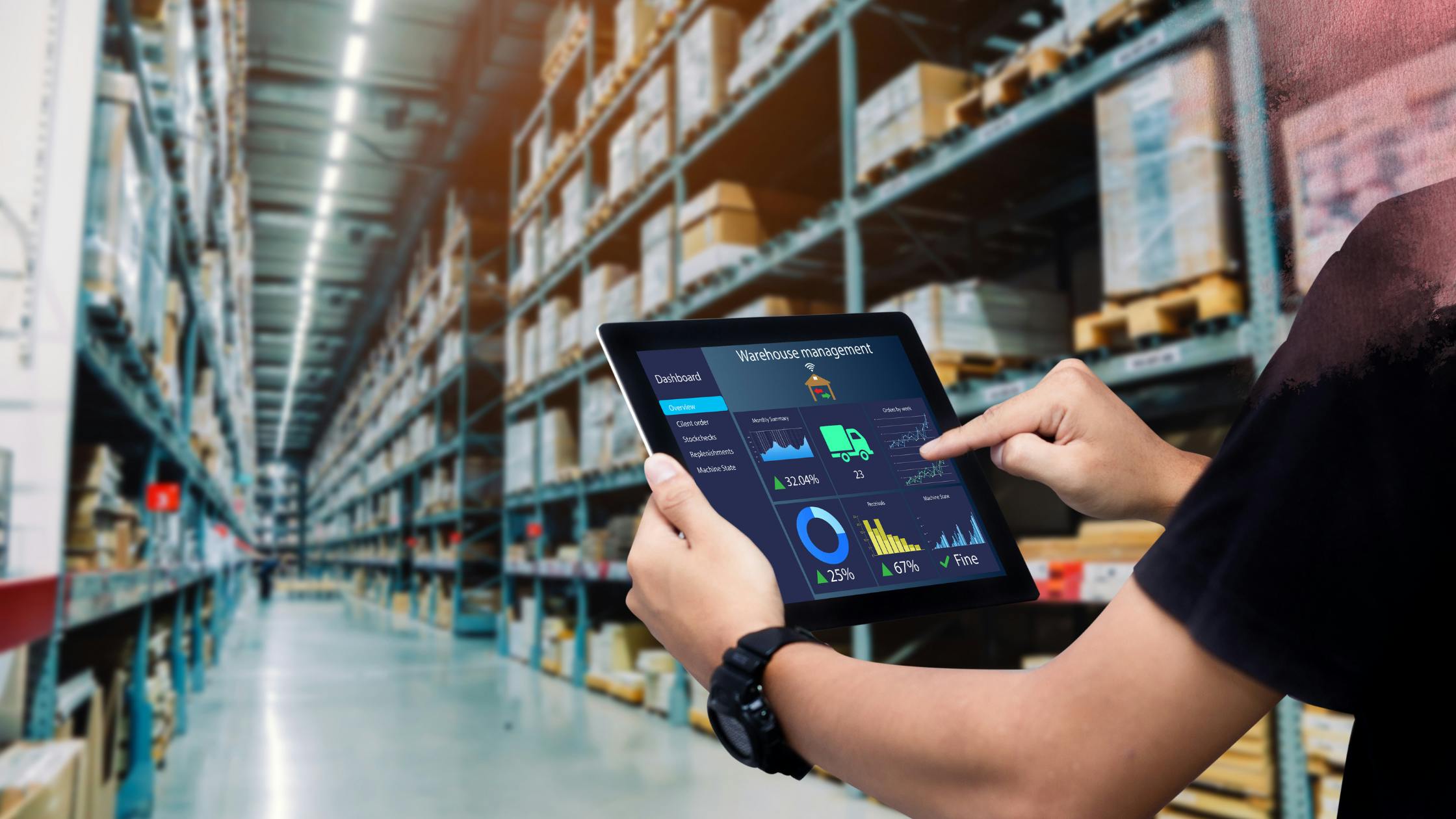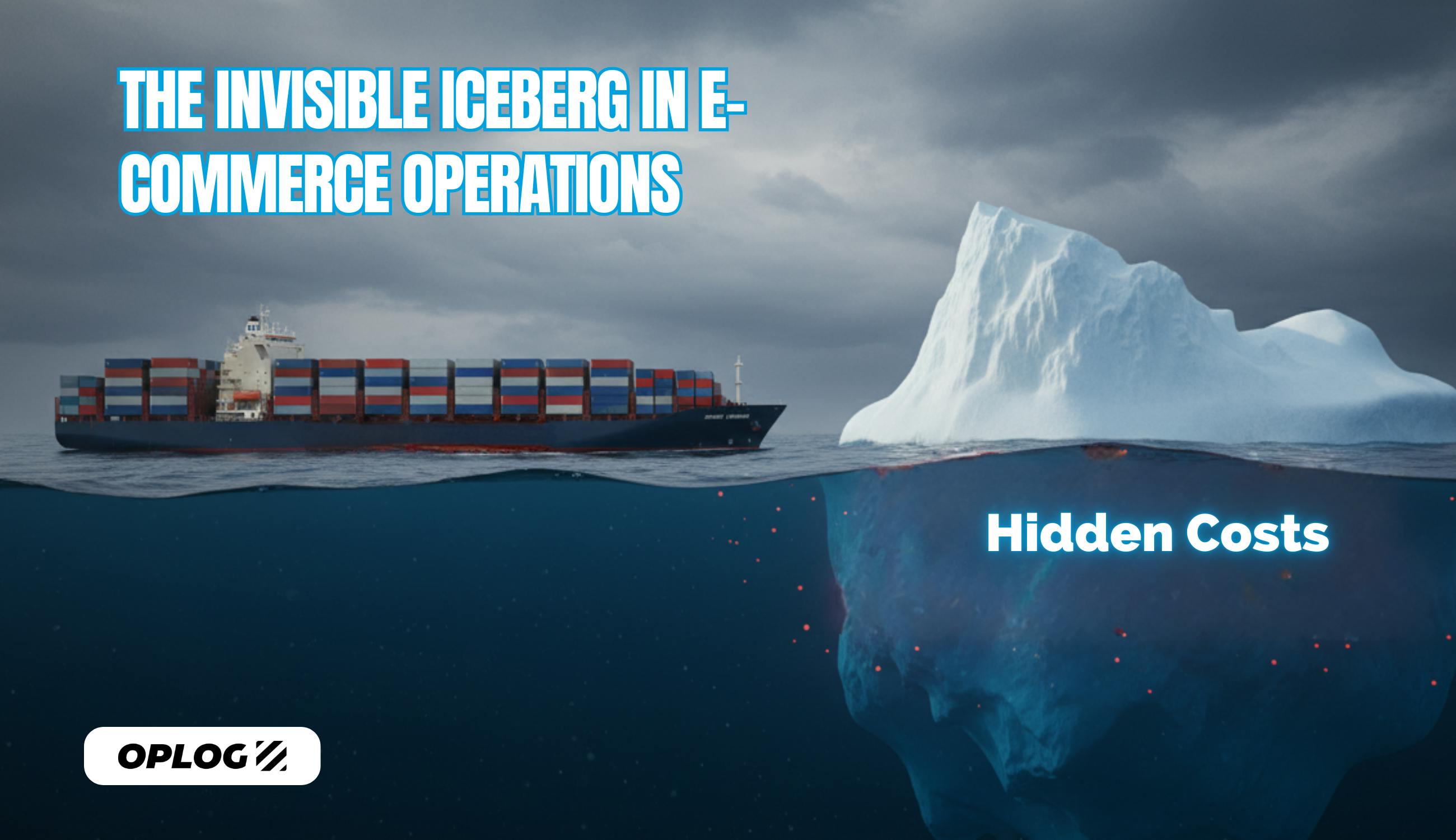The notification arrives at 3 AM: "High-demand product now showing zero inventory across all channels." By morning, you've lost seventeen sales, disappointed customers are posting negative reviews, and your fulfillment teams are scrambling to expedite emergency shipments. Meanwhile, your warehouse holds $2.3 million in slow-moving inventory that's tying up capital and eating into margins.
This scenario plays out daily across ecommerce brands worldwide. The hidden cost of inventory missteps extends far beyond lost revenue—it erodes customer trust, damages brand reputation, and creates operational chaos that ripples through every aspect of your business.
Modern inventory management isn't about counting what's on the shelf. It's about creating an intelligent, responsive system that anticipates demand, prevents stockouts, and maintains optimal levels across every SKU, every channel, and every warehouse. The brands winning in today's competitive landscape have moved beyond reactive inventory management to embrace precision-driven, technology-enabled strategies that turn inventory into a competitive advantage.
The True Cost of Inventory Blind Spots
Before diving into solutions, let's examine what's actually at stake. Research indicates that businesses lose an average of 4% of annual revenue to stockouts, while excess inventory typically consumes 20-30% of a company's working capital. But these figures only scratch the surface.
Customer Experience Impact: When a customer encounters a stockout, 37% will purchase from a competitor immediately. More concerning, 21% won't return to your brand at all. In subscription commerce, stockouts increase churn rates by 15-25% within the following quarter.
Operational Cascade Effects: Inventory shortfalls force fulfillment teams into crisis mode, leading to rushed procurement decisions, premium shipping costs, and disrupted warehouse workflows. These reactive measures typically cost 3-5x more than proactive inventory management.
Financial Opportunity Costs: Capital tied up in excess inventory can't be invested in growth initiatives, marketing, or product development. Fast-growing brands often discover that poor inventory management becomes their primary constraint to scaling operations.
The solution isn't simply buying more inventory management software—it's implementing a comprehensive inventory tracking system that provides real-time visibility, accurate forecasting, and automated prevention mechanisms.
Building Real-Time Inventory Visibility: The Foundation
Real-time inventory visibility goes beyond knowing current stock levels. It's about creating a unified view of inventory across all locations, channels, and stages of the supply chain that updates dynamically as conditions change.
The Components of True Visibility
Multi-Location Synchronization: Modern brands operate across warehouses, retail locations, drop-ship partners, and third-party fulfillment centers. Effective visibility requires real-time synchronization across all inventory touchpoints, ensuring that when a product sells through one channel, availability updates instantly across every platform.
In-Transit Tracking: Traditional systems only track inventory once it arrives. Advanced inventory tracking systemsmonitor goods in transit, providing accurate available-to-promise dates and preventing overselling based on phantom inventory.
Quality-Based Segmentation: Not all inventory is created equal. Smart systems distinguish between sellable stock, damaged goods, returned items awaiting inspection, and products allocated for specific purposes, providing accurate sellable inventory counts.
Technology Infrastructure for Visibility
IoT Integration: Smart sensors and RFID technology enable automatic inventory updates without manual intervention. These systems track inventory movement, environmental conditions, and even product location within warehouses, creating granular visibility that prevents loss and improves accuracy.
API-First Architecture: The most flexible systems connect seamlessly with existing ecommerce platforms, accounting software, and third-party logistics providers through robust APIs, creating a single source of truth across all systems.
Cloud-Based Processing: Modern inventory platforms process thousands of transactions per second across multiple channels, requiring cloud infrastructure that scales with demand while maintaining real-time response times.
Advanced Forecasting: Moving Beyond Historical Data
Traditional forecasting in fulfillment relied heavily on historical sales patterns and basic seasonal adjustments. While historical data remains important, modern forecasting incorporates diverse data sources and advanced analytics to predict demand with remarkable accuracy.
AI-Powered Predictive Analytics
Machine Learning Models: Advanced algorithms analyze patterns across multiple variables—sales velocity, seasonality, promotional impact, market trends, and external factors like weather or economic indicators. These models continuously learn and adjust, improving accuracy over time.
According to McKinsey, companies using AI for demand forecasting can reduce errors by 20–50% compared to traditional methods.

External Data Integration: The most sophisticated forecasting systems incorporate social media sentiment, competitor pricing, economic indicators, and industry trends. For example, a sudden surge in social media mentions of a product category can trigger inventory adjustments before demand materializes.
Promotional and Event Modeling: Effective forecasting accounts for marketing campaigns, seasonal events, and promotional activities. AI models can predict the inventory impact of specific marketing initiatives, ensuring adequate stock for demand spikes while avoiding post-promotion excess.
Scenario Planning and Stress Testing
What-If Analysis: Modern forecasting tools enable businesses to model different scenarios—economic downturns, supply chain disruptions, or viral product moments—and prepare inventory strategies for each possibility.
Confidence Intervals: Rather than single-point forecasts, advanced systems provide confidence ranges, helping inventory managers understand uncertainty levels and adjust safety stock accordingly.
Stockout Prevention Strategies That Actually Work
Stockout prevention strategies extend beyond maintaining high inventory levels. Effective prevention combines intelligent forecasting, dynamic safety stock calculations, and proactive replenishment systems.
Dynamic Safety Stock Calculation
Traditional safety stock formulas use static calculations based on average demand and lead times. Modern approaches adjust safety stock dynamically based on:
Lead Time Variability: Systems track actual supplier performance and adjust safety stock based on historical lead time variations, not just averages.
Demand Volatility: Products with unpredictable demand patterns require different safety stock strategies than steady-selling items.
Strategic Importance: High-margin products or key customer favorites may warrant higher safety stock levels than low-performing SKUs.
Automated Replenishment Systems
AI-Driven Reorder Points: Instead of fixed reorder points, intelligent systems calculate optimal reorder triggers based on current demand trends, supplier performance, and upcoming promotional activities.
Supplier Performance Integration: The best systems track supplier reliability and adjust procurement strategies accordingly. Unreliable suppliers trigger earlier reorders or secondary supplier activation.
Economic Order Quantity Optimization: Modern systems recalculate optimal order quantities continuously, balancing carrying costs against order frequency to minimize total inventory costs.
Multi-Tier Prevention Strategies
Primary Prevention: Accurate forecasting and proper safety stock levels prevent most stockouts before they occur.
Secondary Prevention: Real-time monitoring systems trigger alerts when inventory levels approach critical thresholds, enabling manual intervention before stockouts occur.
Tertiary Prevention: Emergency protocols include expedited shipping, alternative sourcing, and customer communication strategies when stockouts are unavoidable.
The Technology Stack for Modern Inventory Management
Ecommerce inventory management requires sophisticated technology infrastructure that integrates multiple systems while maintaining simplicity for users.
Core System Architecture
Warehouse Management Systems (WMS): Modern WMS platforms go beyond basic inventory tracking to optimize storage locations, picking routes, and labor allocation. Integration with inventory forecasting creates a seamless flow from demand prediction to order fulfillment.
Enterprise Resource Planning (ERP) Integration: Effective inventory management requires tight integration with financial systems, procurement workflows, and production planning. Modern solutions provide real-time synchronization between inventory levels and financial reporting.
Order Management Systems (OMS): Sophisticated OMS platforms manage complex order routing decisions, ensuring orders fulfill from optimal locations while maintaining inventory availability across channels.
Advanced Analytics and Reporting
Performance Dashboards: Real-time dashboards provide inventory managers with key metrics—stock levels, forecast accuracy, supplier performance, and financial impact—enabling quick decision-making.
Exception Reporting: Automated alerts identify potential issues before they become problems—slow-moving inventory, forecast deviations, or supplier delays—allowing proactive management.
Financial Impact Analysis: Modern systems track the financial implications of inventory decisions, measuring carrying costs, stockout impact, and procurement efficiency to optimize overall profitability.
Integration Capabilities
Multi-Channel Synchronization: Seamless integration with Shopify, Amazon, WooCommerce, and other sales channels ensures inventory levels remain accurate across all platforms.
Third-Party Logistics (3PL) Connectivity: For brands using external fulfillment providers, robust API connections enable real-time inventory visibility and automated stock transfers between facilities.
Supplier and Vendor Management: Direct connections with key suppliers enable automated purchase order creation, delivery tracking, and performance monitoring.
Precision at Scale: How Leading Brands Approach Inventory Excellence
The most successful brands don't manage inventory—they orchestrate it. These companies have moved beyond traditional reactive approaches to create precision-driven systems that anticipate needs, prevent problems, and adapt to changing conditions automatically.
Real-Time Decision Intelligence: Leading brands implement systems that provide instant visibility across every aspect of their inventory ecosystem. When market conditions shift, supply chains encounter disruptions, or demand patterns change, these systems adapt automatically, maintaining optimal stock levels without manual intervention.
AI-Powered Forecasting Integration: Rather than relying on historical patterns alone, sophisticated operations incorporate machine learning algorithms that analyze customer behavior, market trends, seasonal variations, and external economic factors. These systems don't just predict what might happen—they continuously learn and refine their accuracy.
Automated Replenishment Excellence: The most advanced operations eliminate guesswork through intelligent automation. When inventory reaches optimal reorder points, systems automatically generate purchase orders, negotiate supplier terms, and coordinate delivery schedules. This removes human error from routine decisions while freeing teams to focus on strategic initiatives.
With OPLOG, inventory management isn't guesswork—it's precision at scale. From real-time stock visibility to AI-powered forecasting and automated replenishment, our fulfillment platform ensures you never lose a sale to a stockout or tie up capital in overstock. Whether you're scaling fast or navigating seasonality, OPLOG keeps your inventory aligned with your operations—accurate, optimized, and always under control.
Implementation Roadmap: From Planning to Execution
Transforming inventory management requires systematic implementation across multiple phases, each building on previous achievements while delivering immediate value.
Phase 1: Foundation Building (Months 1-2)
Data Audit and Cleansing: Begin with comprehensive inventory data review, identifying inconsistencies, duplicate SKUs, and missing information. Clean data forms the foundation for all subsequent improvements.
System Integration Planning: Map current technology infrastructure and identify integration requirements. Determine which systems need replacement versus enhancement, creating a timeline that minimizes operational disruption.
Team Training and Change Management: Introduce new processes gradually, providing comprehensive training for inventory managers, warehouse staff, and customer service teams who will interact with improved systems.
Phase 2: Core System Deployment (Months 3-4)
Real-Time Visibility Implementation: Deploy inventory tracking systems that provide immediate visibility across all locations and channels. Start with high-volume SKUs to demonstrate quick wins.
Forecasting Model Development: Implement basic AI-powered forecasting for key product categories, incorporating historical data, seasonality, and promotional impacts.
Automated Alert Configuration: Establish monitoring systems that identify potential stockouts, overstock situations, and forecast deviations before they impact operations.
Phase 3: Advanced Optimization (Months 5-6)
Dynamic Safety Stock Implementation: Move beyond static safety stock levels to dynamic calculations that adjust based on demand variability, supplier performance, and strategic importance.
Supplier Performance Integration: Incorporate supplier reliability data into forecasting and procurement decisions, automatically adjusting lead times and safety stock based on actual performance.
Financial Impact Measurement: Implement comprehensive tracking of inventory management's financial impact, measuring carrying costs, stockout losses, and procurement efficiency.
Phase 4: Continuous Improvement (Ongoing)
AI Model Refinement: Continuously improve forecasting accuracy by incorporating new data sources, refining algorithms, and adjusting to changing market conditions.
Process Optimization: Regular review of inventory management processes, identifying bottlenecks and opportunities for further automation or efficiency improvements.
Strategic Planning Integration: Align inventory management with broader business strategy, incorporating growth plans, market expansion, and product development into forecasting models.
Future-Proofing Your Inventory Strategy
The inventory management landscape continues evolving rapidly, driven by technological advancement, changing consumer expectations, and global supply chain complexity. Successful brands prepare for these changes by building flexible, adaptable systems.
Emerging Technologies and Trends
Blockchain for Supply Chain Transparency: Distributed ledger technology enables complete supply chain visibility, from raw materials to final delivery, creating unprecedented transparency and trust.
Edge Computing for Real-Time Processing: As IoT devices proliferate throughout warehouses and supply chains, edge computing enables instant data processing and decision-making without cloud connectivity delays.
Sustainability Integration: Environmental considerations increasingly influence inventory decisions, from packaging optimization to carbon footprint reduction in transportation and storage.
Preparing for Uncertainty
Resilient Supply Chain Design: Future inventory strategies must account for increasing supply chain volatility, building redundancy and flexibility into procurement and distribution networks.
Customer Expectation Evolution: As same-day and next-day delivery become standard, inventory positioning and forecasting must adapt to support increasingly rapid fulfillment requirements.
Regulatory Compliance: Growing data privacy and supply chain transparency regulations require inventory systems that maintain detailed tracking while protecting sensitive information.
Building Organizational Capabilities
Data Literacy Development: As inventory management becomes increasingly data-driven, organizations must invest in analytical skills across their teams, from warehouse managers to executive leadership.
Cross-Functional Integration: Effective inventory management requires collaboration between procurement, sales, marketing, and finance teams, necessitating organizational structures that facilitate this coordination.
Vendor Partnership Evolution: Traditional vendor relationships must evolve into strategic partnerships that share data, coordinate planning, and jointly optimize inventory across the entire supply chain.
Conclusion: Transforming Inventory from Cost Center to Competitive Advantage
Modern inventory management represents one of the clearest opportunities for ecommerce brands to create sustainable competitive advantages. Companies that master real-time visibility, AI-powered forecasting, and proactive stockout prevention don't just reduce costs—they enable faster growth, improve customer satisfaction, and build more resilient operations.
The technology exists today to eliminate most inventory-related problems that plague growing brands. Real-time inventory tracking systems provide the visibility needed for intelligent decision-making. Advanced forecasting in fulfillment operations enables accurate demand prediction even in volatile markets. Comprehensive stockout prevention strategies ensure customer needs are met consistently while optimizing capital efficiency.
The question isn't whether to upgrade your inventory management—it's how quickly you can implement systems that turn inventory into a strategic asset.
The brands that will dominate their markets in the next decade are implementing these capabilities now, building inventory management systems that scale with their ambitions while maintaining the precision and efficiency that customers expect.
Success requires more than technology implementation—it demands strategic thinking, organizational alignment, and ongoing commitment to continuous improvement. But for brands willing to make this investment, the rewards include reduced costs, improved customer satisfaction, and the operational foundation needed to scale rapidly and sustainably.
Start with real-time visibility, advance to AI-powered forecasting, and evolve toward fully automated inventory optimization. Your customers, your team, and your bottom line will all benefit from inventory management that anticipates needs, prevents problems, and adapts automatically to changing conditions.
The future of ecommerce inventory management is precision-driven, customer-focused, and strategically aligned with business growth. The question is: are you ready to build it?






